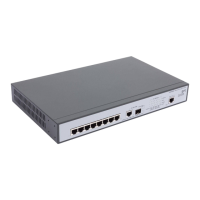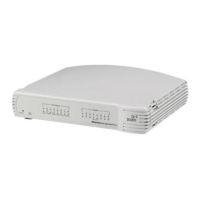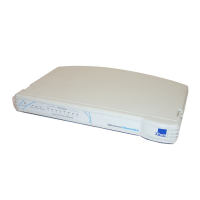244 APPENDIX E: GLOSSARY
EAPOL is implemented as part of the IEEE 802.1X Port Authentication
standard.
Generic Attribute
Registration Protocol
(GARP)
GARP is a protocol that can be used by endstations and switches to
register and propagate multicast group membership information in a
switched environment so that multicast data frames are propagated
only to those parts of a switched LAN containing registered
endstations. Formerly called Group Address Registration Protocol.
IEEE 802.1D Specifies a general method for the operation of MAC bridges, including
the Spanning Tree Protocol.
IEEE 802.1Q VLAN Tagging—Defines Ethernet frame tags which carry VLAN
information. It allows switches to assign end stations to different virtual
LANs, and defines a standard way for VLANs to communicate across
switched networks.
IEEE 802.1p An IEEE standard for providing quality of service (QoS) in Ethernet
networks. The standard uses packet tags that define up to eight traffic
classes and allows switches to transmit packets based on the tagged
priority value.
IEEE 802.1X Port Authentication controls access to the switch ports by requiring
users to first enter a user ID and password for authentication.
IEEE 802.3 Defines carrier sense multiple access with collision detection (CSMA/CD)
access method and physical layer specifications.
IEEE 802.3ab Defines CSMA/CD access method and physical layer specifications for
1000BASE-T Gigabit Ethernet. (Now incorporated in IEEE 802.3-2005.)
IEEE 802.3ac Defines frame extensions for VLAN tagging.
IEEE 802.3af (PoE) An IEEE standard for providing Power over Ethernet (PoE) capabilities.
When Ethernet is passed over copper cable, two twisted pairs are used
for data transfer, and two twisted pairs are unused. With PoE, power
can either be passed over the two data pairs or over the two spare
pairs.
IEEE 802.3at (PoE Plus) An IEEE standard for providing more power to power-driven devices
than the original Power over Ethernet (PoE) standard. When Ethernet is
passed over copper cable, two twisted pairs are used for data transfer,
and two twisted pairs are unused. With PoE Plus, power can either be
passed over the two data pairs, the two spare pairs, or all four pairs

